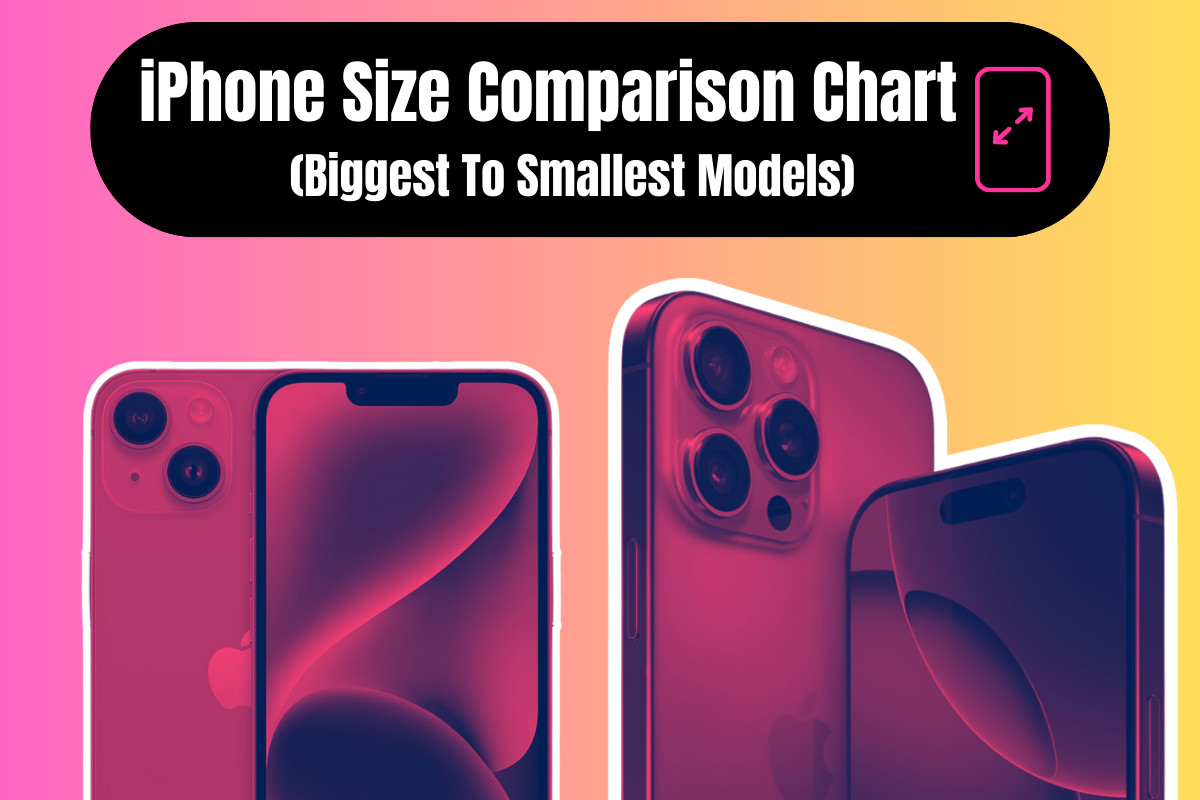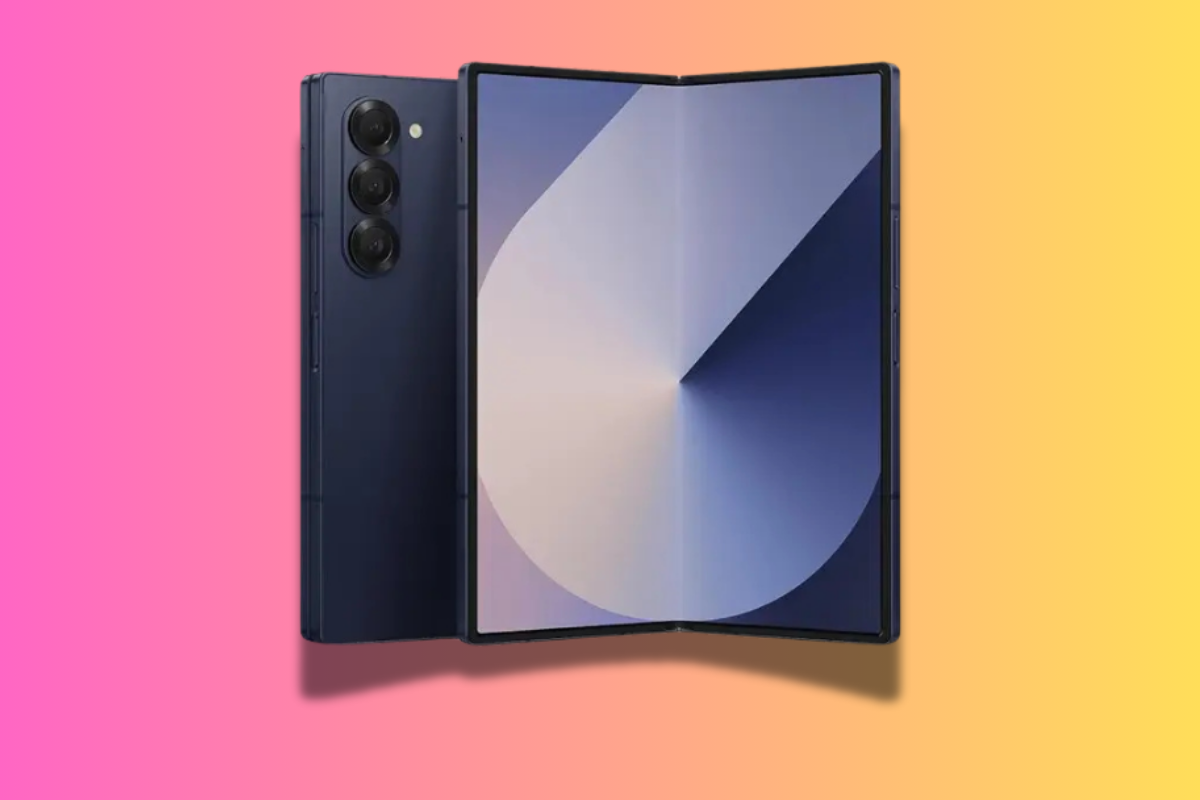Here’s all the sizes and dimensions of Apple’s latest iPhone series, the iPhone 16 (as well as details for its older, legacy models)…
iPhone 16 Sizes Compared (Latest Series)
Dimensions & Screen Sizes
| Model | Dimensions (mm) | Screen Size |
| iPhone 16 | 147.57 x 71.63 x 7.87 | 📱 6.1in |
| iPhone 16 Plus | 160.78 x 77.72 x 7.87 | 📱 6.7in |
| iPhone 16 Pro | 149.61 x 71.37 x 8.13 | 📱 6.3in |
| iPhone 16 Pro Max | 163.07 x 77.72 x 8.13 | 📱 6.9in |
Screen Tech & Differences
The standard iPhone (e.g. the iPhone 16) is the base model and it comes with a 6.1in OLED display.
It is the smallest and most compact model in the range.
The Plus model iPhone (iPhone 16 Plus) is slightly smaller than the Pro Max. It has a 6.7in display but it lacks the Pro / Pro Max’s more advanced 120Hz ProMotion screen tech.
The Pro / Pro Max models are the “flagship models” – they’re the most expensive, pack in the best camera tech and the fastest processor (Apple’s A18 Pro chip).
The iPhone 16 Pro Max is the biggest overall with a 6.9in OLED display
The iPhone 16 Pro features a 6.3in screen which is slightly larger than the base model iPhone 16 (6.1in).
Buying Advice For 2025
The iPhone 16 Pro Max and 16 Pro are the flagship options, the most expensive and they come with the best camera tech and performance.
The iPhone 16 and iPhone 16 Plus are the base models and lack things like the Pro’s advanced cameras and 120Hz ProMotion display.
All models come with Dynamic Island, though.
For value for money and general usage, the base model iPhone 16 is brilliant. Need a bigger display and more battery life, go with the iPhone 16 Plus.
If you want the best possible performance, camera tech, and screen quality, go with the iPhone 16 Pro Max (the largest model) or the iPhone 16 Pro (the more compact option).
Curious about the size of competing phones? Check out our phone sizes database
Standard iPhone, Plus, Pro or Pro Max?
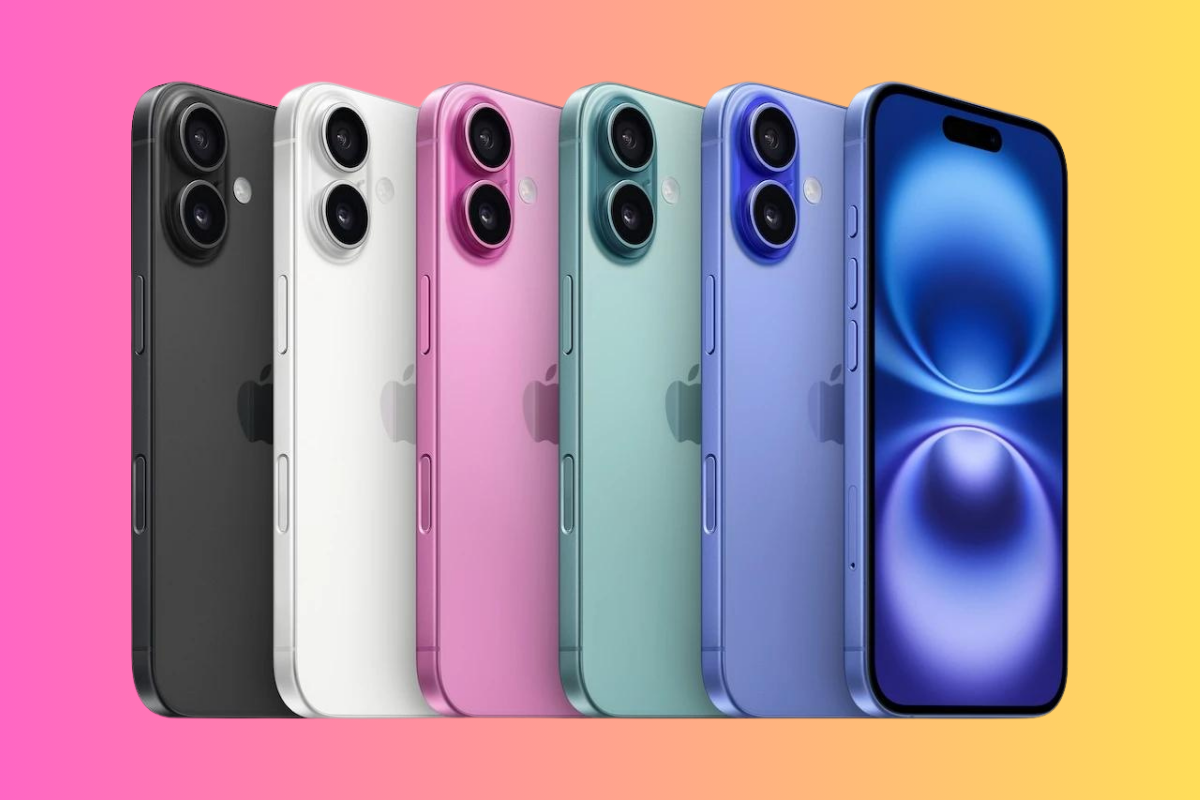
The standard iPhone (e.g. the iPhone 16) is the base model and it comes with a 6.1in OLED display.
It is the smallest and most compact model in the range.
The Plus model iPhone (iPhone 16 Plus) is slightly smaller than the Pro Max. It has a 6.8in display but lacks the Pro / Pro Max’s more advanced (and expensive) features.
The Pro / Pro Max models are the “flagship models” they’re the most expensive, pack in the best camera tech and the fastest processor (Apple’s A18 Pro chip).
- The Pro Max is the biggest with a 6.9in OLED display
- The Pro features a 6.3in screen which is slightly larger than the base model iPhone 16
Apple’s iPhone isn’t the only great phone on the market, check out the best iPhone alternatives for a wider view of what’s available right now.
Get More Detail On Each Model
- iPhone 16 Sizes Compared (Latest Series)
- The Sizes of iPhones: A Primer On Where We’re At Right Now, Size-Wise…
- iPhone 16 Size & Dimensions
- iPhone Size Comparison Chart: All Legacy iPhones Ordered By Size…
- iPhone 15 Sizes and Dimensions
- iPhone 14 Sizes and Dimensions
- iPhone 13 Sizes & Dimensions
- iPhone Size Considerations. Things To Keep In Mind. How They Compare To Android Phones & More…
- iPhone Size Guide – Biggest To Smallest
- What iPhone is The Biggest?
- How Many iPhones Has Apple Released To Date?
- Which iPhone To Buy – Your Options Right Now
The Sizes of iPhones: A Primer On Where We’re At Right Now, Size-Wise…
Choosing the right iPhone often comes down to finding the perfect size for your needs.
With Apple offering a range of models, from compact designs to the biggest iPhone on the market, knowing the differences in iPhone sizes and iPhone screen sizes is essential.
Phone sizes vary across brands, and Apple’s approach to the size of its phones has varied massively.
For a broader overview of how iPhones compare to other brands’ phones, check out our dedicated phone sizes comparison database.
In this guide, we’ll dive into an iPhone size comparison, showcasing everything from the smallest to the largest iPhone.
Whether you’re after specific iPhone dimensions or want an iPhone screen size comparison chart to help visualize your options, we’ve got you covered.
Let’s compare iPhone sizes to help you find the best model to fit your lifestyle.
As of right now, here’s how Apple’s latest iPhones compare with respect to size and dimensions:
iPhone 16 Size & Dimensions

Screen Size: 6.1 inches
Dimensions: 5.81 x 2.82 x 0.31 inches (147.57 x 71.63 x 7.87 mm)
Weight: 6 ounces (170.1 grams)
Resolution: 2556 x 1179 pixels (460 ppi)
The iPhone 16 serves as the standard model, balancing features, size, and price, making it a versatile choice for most users.
iPhone 16 Plus Size & Dimensions

- Screen Size: 6.7 inches
- Dimensions: 6.33 x 3.06 x 0.31 inches (160.78 x 77.72 x 7.87 mm)
- Weight: 7.03 ounces (199.3 grams)
- Resolution: 2796 x 1290 pixels (460 ppi)
The iPhone 16 Plus offers a large-screen experience without the pro-level features, providing a great balance of screen size and affordability.
iPhone 16 Pro Size & Dimensions
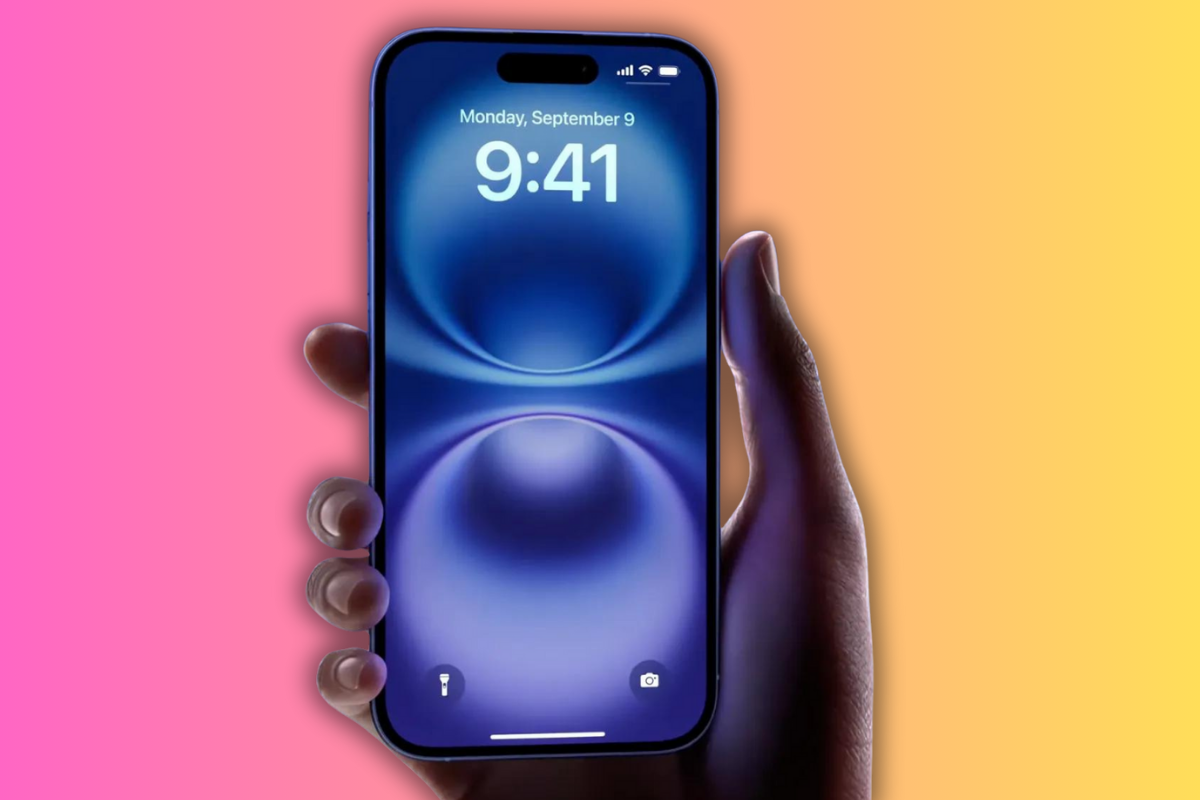
- Screen Size: 6.3 inches (increased from 6.1 inches in the previous model)
- Dimensions: 5.89 x 2.81 x 0.32 inches (149.61 x 71.37 x 8.13 mm)
- Weight: 7.03 ounces (199.3 grams)
- Resolution: 2622 x 1206 pixels (460 ppi)
The iPhone 16 Pro introduces a slightly larger display and pro-level features in a compact form. The reduced bezels increase screen real estate without significantly altering device dimensions, making it ideal for those wanting a powerful device in a more portable size.
iPhone 16 Pro Max Size & Dimensions

- Screen Size: 6.9 inches (up from 6.7 inches in the previous model)
- Dimensions: 6.42 x 3.06 x 0.32 inches (163.07 x 77.72 x 8.13 mm)
- Weight: 7.99 ounces (226.6 grams)
- Resolution: 2868 x 1320 pixels (460 ppi)
As the largest and most feature-rich model, the iPhone 16 Pro Max offers an expansive display with advanced pro features in a slightly larger frame than before. The Pro Max model’s minimized bezels contribute to the increased screen size without drastically affecting overall dimensions.
iPhone Size Comparison Chart: All Legacy iPhones Ordered By Size…
Older iPhone Model Sizes Compared
Dimensions & Screen Sizes
| Model | Dimensions | Display | Year |
| iPhone 15 Plus | 160.9 x 77.8 x 7.8 mm | 6.7″ | 2023 |
| iPhone 15 | 147.6 x 71.6 x 7.8 mm | 6.1″ | 2023 |
| iPhone 14 | 146.7 x 71.5 x 7.8 mm | 6.1″ | 2022 |
| iPhone 14 Plus | 160.8 x 78.1 x 7.8 mm | 6.7″ | 2022 |
| iPhone 14 Pro Max | 160.7 x 77.6 x 7.85 mm | 6.7″ | 2022 |
| iPhone 14 Pro | 147.46 x 71.45 x 7.85 mm | 6.1″ | 2022 |
| iPhone 13 | 146.7 x 71.5 x 7.4 mm | 6.1″ | 2021 |
| iPhone 13 Mini | 131.5 x 64.2 x 7.4 mm | 5.4″ | 2021 |
| iPhone 13 Pro | 146.7 x 71.5 x 7.4 mm | 6.1″ | 2021 |
| iPhone 13 Pro Max | 160.8 x 78.1 x 7.4 mm | 6.8″ | 2021 |
| iPhone 12 Pro Max | 160.8 x 78.1 x 7.4 mm | 6.7″ | 2020 |
| iPhone 12 Pro | 146.7 x 71.5 x 7.4 mm | 6.1″ | 2020 |
| iPhone 12 | 146.7 x 71.5 x 7.4 mm | 6.1″ | 2020 |
| iPhone 12 Mini | 131.5 x 64.2 x 7.4 mm | 5.4″ | 2020 |
| iPhone SE (2020) | 67.3 x 138.4 x 7.3 mm | 4.7″ | 2020 |
| iPhone 11 Pro Max | 77.8 x 158 x 8.1 mm | 6.5″ | 2019 |
| iPhone 11 Pro | 144 x 71.4 x 8.1 mm | 5.8″ | 2019 |
| iPhone 11 | 5.7 x 150.9 x 8.3 mm | 6.1″ | 2019 |
| iPhone XS Max | 157.5 x 77.4 x 7.7 mm | 6.5″ | 2018 |
| iPhone XS | 143.6 x 70.9 x 7.7 mm | 5.8″ | 2018 |
| iPhone XR | 150.9 x 75.7 x 8.3 mm | 6.1″ | 2018 |
| iPhone X | 143.6 x 70.9 x 7.7 mm | 5.8″ | 2017 |
| iPhone 8 Plus | 158.4 x 78.1 x 7.5 mm | 5.5″ | 2017 |
| iPhone 8 | 138.4 x 67.3 x 7.3 mm | 4.7″ | 2017 |
| iPhone 7 Plus | 158.2 x 77.9 x 7.3 mm | 5.5″ | 2016 |
| iPhone 7 | 138.3 x 67.1 x 7.1 mm | 4.7″ | 2016 |
| iPhone 6s Plus | 158.2 x 77.9 x 7.3 mm | 5.5″ | 2015 |
| iPhone 6s | 138.3 x 67.1 x 7.1 mm | 4.7″ | 2015 |
| iPhone 6 Plus | 158.2 x 77.9 x 7.3 mm | 5.5″ | 2014 |
| iPhone 6 | 138.3 x 67.1 x 7.1 mm | 4.7″ | 2014 |
| iPhone SE | 123.8 x 58.6 x 7.6 mm | 4″ | 2016 |
| iPhone 5s | 123.8 x 58.6 x 7.6 mm | 4″ | 2013 |
| iPhone 5 | 123.8 x 58.6 x 7.6 mm | 4″ | 2012 |
| iPhone 4s | 115.2 x 58.6 x 9.3 mm | 3.5″ | 2011 |
| iPhone 4 | 115.2 x 58.6 x 9.3 mm | 3.5″ | 2010 |
| iPhone 3GS | 115.5 x 62.1 x 12.3 mm | 3.5″ | 2009 |
iPhones Used To Be Tiny, Now They’re Much Bigger – But Why?
Apple’s early iPhones were compact, with 3.5in displays. Today, the iPhone 16 Pro Max boasts a 6.9in OLED screen, while the “smallest” model, the iPhone 16, still has a 6.1in display.
What Happened to the iPhone Mini?
Apple ditched the iPhone Mini after poor sales. The iPhone 13 Mini was the last one, but we wouldn’t recommend it—its battery life was awful.
Why iPhones Keep Getting Bigger
Early iPhones had thick bezels and a home button that ate up space.
When Apple went all-screen, it maximised display size without making devices much bigger.
Fun fact: the iPhone 8 Plus, Apple’s last home-button iPhone, is larger and heavier than today’s iPhone 15 Pro Max—despite having a smaller screen.
Curious about the size of competing phones? Check out our phone sizes database
iPhone 15 Sizes and Dimensions
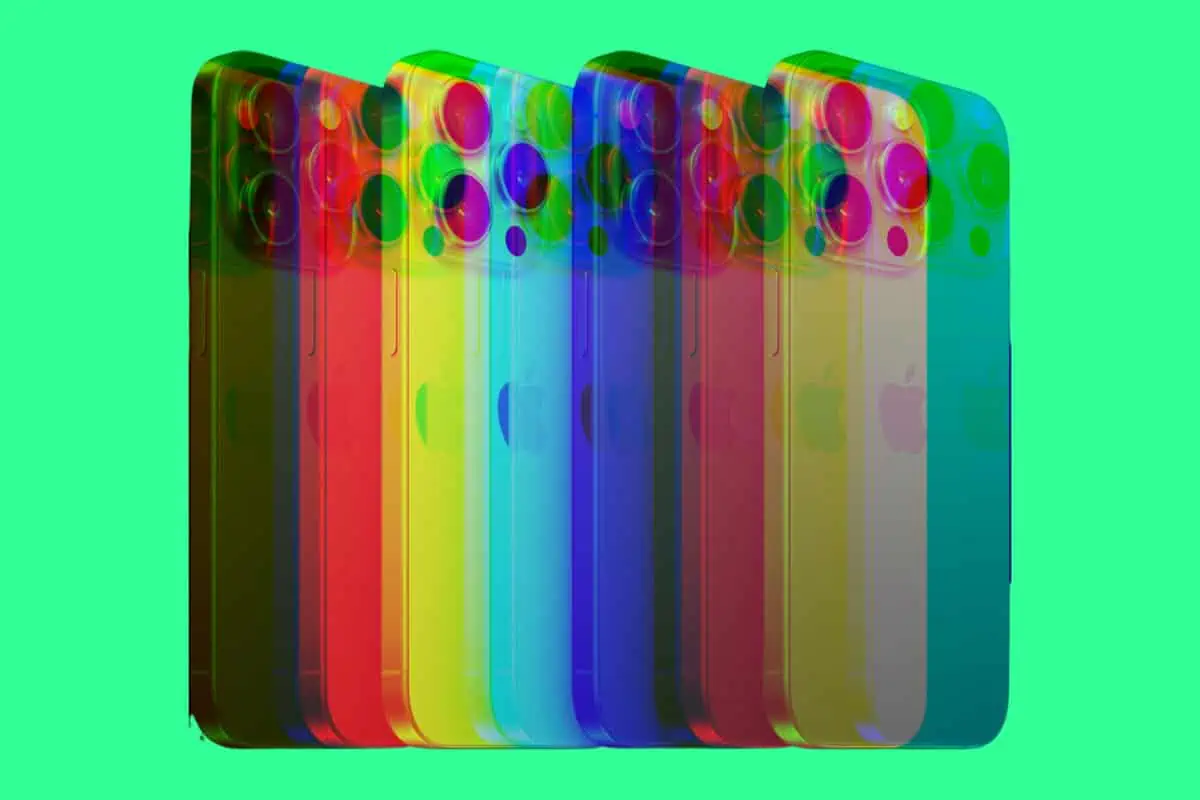
| MODEL | DISPLAY SIZE | DISPLAY TYPE | DIMENSIONS |
|---|---|---|---|
| iPhone 15 Pro Max | 6.7in | OLED | 159.9 x 76.7 x 8.25 mm |
| iPhone 15 Pro | 6.1in | OLED | 146.6 x 70.6 x 8.3 mm |
| iPhone 15 Plus | 6.7in | OLED | 160.9 x 77.8 x 7.8 mm |
| iPhone 15 | 6.1in | OLED | 147.6 x 71.6 x 7.8 mm |
The iPhone 15 series picks up where the iPhone 14 left off, adding in a slew of updates to all of the models and keeping the prices exactly they same as they were before. This was a surprising move by Apple, given the role of inflation in 2023’s supply chain. But we’ll take it.
The phones are similar in designed and size to what came before, but if you’re looking at picking up any of the iPhone 15 models this year, here’s a quick overview of how they’re sizes and dimensions compare.
iPhone 15 Pro Max
- Display Size: The iPhone 15 Pro Max boasts a generously large 6.7-inch OLED display, which offers vibrant colors and sharp visuals for a fantastic viewing experience.
- Dimensions: In terms of physical dimensions, it measures 159.9 x 76.7 x 8.25 mm. This makes it one of the larger iPhone models, catering to those who prefer a bigger and more immersive display. The slightly thicker profile compared to some other models is likely due to accommodating advanced features and a larger battery.
iPhone 15 Pro
- Display Size: The iPhone 15 Pro features a 6.1-inch OLED display, which strikes a balance between a spacious screen and a manageable form factor. It delivers impressive picture quality and clarity.
- Dimensions: With dimensions of 146.6 x 70.6 x 8.3 mm, this model is known for its sleek and ergonomic design. It’s slightly thinner than the Pro Max, which might appeal to users who prioritize a more compact device while still enjoying a sizable display.
And here’s a detailed comparison of the iPhone 15 Pro vs the iPhone 15 Pro Max.
iPhone 15 Plus
- Display Size: The iPhone 15 Plus also sports a 6.7-inch OLED display, just like the Pro Max, offering a large canvas for multimedia and productivity.
- Dimensions: Measuring at 160.9 x 77.8 x 7.8 mm, the iPhone 15 Plus is notable for its slim profile despite its sizeable screen. This blend of a spacious display and a relatively slender build is designed to provide a comfortable grip and handling experience.
iPhone 15
- Display Size: The standard iPhone 15 comes with a 6.1-inch OLED display, the same size as the Pro model. This ensures a consistent visual experience across the standard and Pro variants.
- Dimensions: Its dimensions are 147.6 x 71.6 x 7.8 mm, making it very similar in size to the iPhone 15 Pro. This model is designed for those who prefer a more compact device while still enjoying the benefits of an OLED display.
iPhone 14 Sizes and Dimensions
| MODEL | DISPLAY SIZE | DISPLAY TYPE | DIMENSIONS |
|---|---|---|---|
| iPhone 14 Pro Max | 6.7in | OLED | 160.7 x 77.6 x 7.85mm |
| iPhone 14 Pro | 6.1in | OLED | 147.46 x 71.45 x 7.85mm |
| iPhone 14 Plus | 6.7in | OLED | 160.8 x 78.1 x 7.8 mm |
| iPhone 14 | 6.1in | OLED | 146.7 x 71.5 x 7.8 mm |
The iPhone 14 series continues Apple’s trend of offering a range of devices to cater to various user preferences, from those who appreciate more compact phones to those who prefer larger, more immersive displays.
Here’s a detailed comparison of how the different models in Apple’s iPhone 14 series compare, with respect to screen sizes and dimensions:
iPhone 14 Pro Max

- Screen Size: 6.8 inches (OLED display)
- Dimensions: 160.7 x 77.6 x 7.85mm
The iPhone 14 Pro Max, as the name suggests, is the largest of the lot, boasting a sizable 6.7-inch OLED display.
Its dimensions are 160.7 x 77.6 x 7.85mm, making it a substantial device in hand.
This large display is excellent for those who enjoy consuming a lot of media or doing tasks that require a bigger screen, such as editing documents or playing graphic-intensive games.
✅ Read iPhone 14 Pro Max Review
iPhone 14 Pro
- Screen Size: 6.1 inches (OLED display)
- Dimensions: 147.46 x 71.45 x 7.85 mm
The iPhone 14 Pro, with dimensions of 147.46 x 71.45 x 7.85mm, is slightly smaller than the Pro Max, featuring a 6.1-inch OLED display.
This model is a perfect blend of performance and portability, providing the power of the Pro line in a slightly more compact form.
This phone is ideal for those who want a high-end device but prefer a more hand-friendly size.
iPhone 14 Plus
- Screen Size: 6.7 inches (OLED display)
- Dimensions: 160.8 x 78.1 x 7.8 mm
The iPhone 14 Plus matches the iPhone 14 Pro Max in terms of display size, featuring a 6.7-inch OLED display.
However, its dimensions are slightly different, at 160.8 x 78.1 x 7.8 mm.
Despite having the same screen size as the Pro Max, the Plus model typically lacks some of the high-end features exclusive to the Pro lineup, making it suitable for those who want a large screen but are willing to compromise on some premium features for a more favorable price point.
iPhone 14
- Screen Size: 6.1 inches (OLED display)
- Dimensions: 146.7 x 71.5 x 7.8 mm
The standard iPhone 14 is the same size as the Pro version with a 6.1-inch OLED display and dimensions of 146.7 x 71.5 x 7.8 mm.
It packs the latest features and updates from Apple in a comfortable form factor, offering a balance between size, performance, and cost.
It’s a great option for those who want the latest from Apple without needing the premium, professional-grade features of the Pro models.
Whether you’re seeking the extensive display of the Pro Max for entertainment and productivity, the professional-grade features in a compact form of the Pro, the larger but cost-effective Plus, or the balanced standard iPhone 14, there’s something in this lineup for everyone.
iPhone 13 Sizes & Dimensions
| MODEL | DISPLAY SIZE | DISPLAY TYPE | DIMENSIONS |
|---|---|---|---|
| iPhone 13 Pro Max | 6.7in | OLED | 160.8 x 78.1 x 7.4 mm |
| iPhone 13 Pro | 6.1in | OLED | 146.7 x 71.5 x 7.4 mm |
| iPhone 13 | 6.1in | OLED | 146.7 x 71.5 x 7.4 mm |
| iPhone 13 Mini | 5.4in | OLED | 131.5 x 64.2 x 7.4 mm |
As of right now, Apple’s latest iPhone is the iPhone 13 – and iPhone 13 range, including the iPhone 13 mini, iPhone 13 Pro, and iPhone 13 Pro Max.
As you can see from the table above, Apple’s iPhone 13 is pretty much exactly the same size as the iPhone 12 – it is slightly thicker, however, to accommodate larger batteries.
The only difference with the iPhone 14 series is that there is no iPhone 14 Mini; instead, this phone will be replaced by the iPhone 14 Plus.
The 14 Plus has the same size display as the Pro Max model, 6.8in, but it runs the same spec as the entry-level iPhone 14.
iPhone Size Considerations. Things To Keep In Mind. How They Compare To Android Phones & More…

How Do iPhone Sizes Compare To Flagship Android Phones?
iPhone sizes range from 6.1 inches to 6.9 inches, aligning closely with flagship Android devices.
The iPhone 16 Pro Max, for instance, measures 163 x 77.6 x 8.25 mm, while the Samsung Galaxy S24 Ultra comes in at 162.3 x 79 x 8.6 mm.
Both models offer expansive displays, with the iPhone at 6.9 inches and the Galaxy at 6.8 inches.
What is The Average Smartphone Screen Size?
In 2025, the average smartphone screen size hovers between 6.1 and 6.9 inches.
Flagships like the Samsung Galaxy S24 Ultra and iPhone 16 Pro Max push the upper limit with their 6.8 and 6.9-inch displays, respectively.
Meanwhile, models such as the Google Pixel 9a and standard iPhone 16 feature more compact 6.1-inch screens.
Which iPhone Size Is Best For Gaming?
For immersive gaming, the iPhone 16 Pro Max (6.9 inches, 227g) provides a spacious display.
If portability is a priority, the iPhone 16 Pro (6.3 inches, 199g) is a solid choice.
The latest Pro models boast Apple’s A18 Pro chipset, delivering exceptional performance for gaming enthusiasts.
Larger iPhones typically offer better battery life due to their increased battery capacity, despite the higher power consumption of bigger screens.
Apple’s transition to OLED technology has enhanced screen efficiency, and the substantial batteries in the Pro Max models ensure top-tier battery performance.
How Does iPhone Screen Size Affect Battery Life?
Larger iPhones typically have better battery life due to bigger batteries, despite larger screens consuming more power.
Apple’s switch to OLED made its screen tech considerably more efficient but the use of larger batteries in the Pro Max models ensures best-in-class battery performance.
Expert’s Advice: Choose Pro Max models for the best battery performance. Standard and Pro models offer a good balance.
How Does The iPhone Size Affect The User Experience For Different Activities?
If you watch a lot of videos, the larger screens on Pro Max models offer a better experience, but their weight can be a drawback during long sessions.
The iPhone 16 (171g) and 16 Plus (201g) strike a balance between screen size and comfort, making them great for extended use.
Bigger displays are ideal for productivity and photo viewing, while smaller models are better suited for prolonged reading.
For one-handed use, the standard iPhone 16 (171g) is the most manageable option.
If you want a mix of screen size and easy handling, the iPhone 16 Pro (199g) is a solid choice.
Meanwhile, the iPhone 16 Pro Max (227g) offers the biggest screen but comes with added weight.
Are There Any Ergonomic Considerations For Different iPhone Sizes?
- One-handed use: standard base model or Pro model
- Balance of screen size and handling: standard base model (iPhone 16) or Pro model (iPhone 16 Pro)
- Largest screen: iPhone 16 Pro Max; it’s big but it is lighter than previous Pro Max models
Choose a Pro Max model if screen size is your top priority, even at the cost of extra weight.
iPhone Size Guide – Biggest To Smallest

Largest iPhones (6.7+ inches)
- iPhone 16 Pro Max
- iPhone 16 Plus
- iPhone 15 Pro Max
- iPhone 14 Pro Max
- iPhone 14 Plus
- iPhone 13 Pro Max
- iPhone 12 Pro Max
Medium-Large iPhones (6.5 inches)
- iPhone XS Max
- iPhone 11 Pro Max
Medium-Sized iPhones (6.3 inches)
- iPhone 16
- iPhone 16 Pro
Medium iPhones (6.1 inches)
- iPhone 15
- iPhone 14 Pro
- iPhone 14
- iPhone 13
- iPhone 12
- iPhone 11
- iPhone XR
Medium-Small iPhones (5.8 inches)
- iPhone X
- iPhone XS
- iPhone 11 Pro
Small-Medium iPhones (5.5 inches)
- iPhone 8 Plus
- iPhone 7 Plus
- iPhone 6S Plus
- iPhone 6 Plus
Small iPhones (5.4 inches)
- iPhone 13 Mini
- iPhone 12 Mini
Smaller iPhones (4.7 inches)
- iPhone SE (3rd gen)
- iPhone SE (2nd gen)
- iPhone 8
- iPhone 7
- iPhone 6S
- iPhone 6
Smallest iPhones (4 inches)
- iPhone SE (1st gen)
- iPhone 5S
- iPhone 5C
- iPhone 5
Original Models (3.5 inches)
- iPhone
- iPhone 4S
- iPhone 4
- iPhone 3GS
- iPhone 3G
What iPhone is The Biggest?
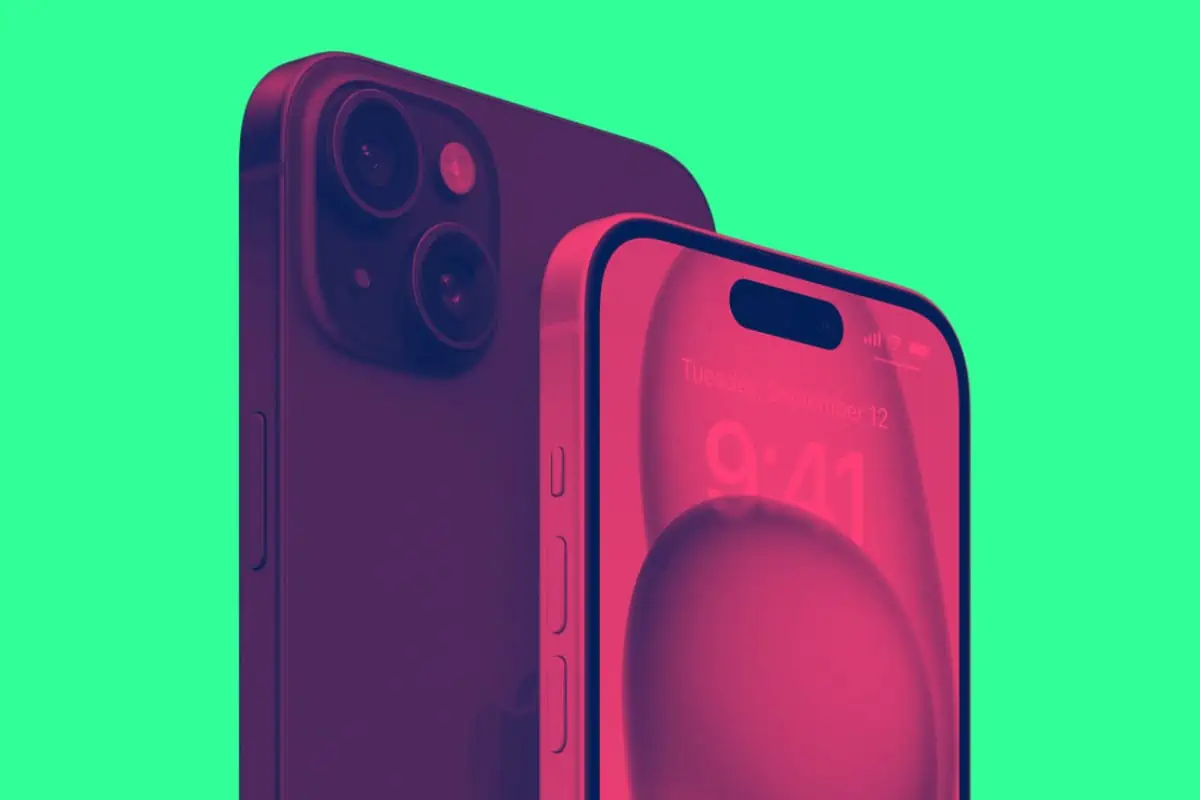
The biggest iPhone you can buy right now is the iPhone 16 Pro Max; it has the biggest display ever fitted to an iPhone at 6.9in.
Like all Pro models, it runs Apple’s ProMotion display tech which allows for 120Hz adaptive refresh rates. Conversely, the iPhone 16 and iPhone 16 Plus are stuck on 60hz which in 2025 is downright criminal.
However, the biggest iPhone overall, by sheer size, is the iPhone 8 Plus. Because it has a home button and large bezels at the top and bottom, it is both wider and taller than the iPhone 13 Pro Max.
How Many iPhones Has Apple Released To Date?
The Complete iPhone Timeline…
From the original iPhone in 2007 to the latest releases in 2023, Apple has introduced a variety of models each year. Here’s a detailed list of all the iPhone models released over the years:
2007
- iPhone: The original iPhone, which revolutionized the smartphone market.
2008
- iPhone 3G: Introduced 3G connectivity and the App Store.
2009
- iPhone 3GS: Improved performance and camera capabilities.
2010
- iPhone 4: Featured a new design, Retina display, and front-facing camera.
2011
- iPhone 4S: Introduced Siri, Apple’s virtual assistant.
2012
- iPhone 5: Larger 4-inch screen and the new Lightning connector.
2013
- iPhone 5C: Colorful plastic body.
- iPhone 5S: Introduced Touch ID and the A7 chip.
2014
- iPhone 6: Larger 4.7-inch display.
- iPhone 6 Plus: Even larger 5.5-inch display.
2015
- iPhone 6S: 3D Touch and improved hardware.
- iPhone 6S Plus: Larger version with same improvements.
- iPhone SE (1st generation): Smaller 4-inch phone with updated internals.
2016
- iPhone 7: Water resistance and removal of headphone jack.
- iPhone 7 Plus: Dual-camera system for better photography.
2017
- iPhone 8: Wireless charging and improved camera.
- iPhone 8 Plus: Larger version with dual cameras.
2018
- iPhone XR: More affordable model with LCD display.
- iPhone XS: Improved hardware and dual cameras.
- iPhone XS Max: Larger version of the XS.
2019
- iPhone 11: Dual-camera system and new colors.
- iPhone 11 Pro: Triple-camera system and improved display.
- iPhone 11 Pro Max: Larger version of the 11 Pro.
2020
- iPhone SE (2nd generation): Affordable option with modern internals.
- iPhone 12: 5G connectivity and OLED display.
- iPhone 12 Mini: Smaller version of the iPhone 12.
- iPhone 12 Pro: Improved cameras and LiDAR scanner.
- iPhone 12 Pro Max: Largest display in an iPhone.
2021
- iPhone 13: Improved battery life and performance.
- iPhone 13 Mini: Smaller version of the iPhone 13.
- iPhone 13 Pro: ProMotion display and enhanced camera system.
- iPhone 13 Pro Max: Largest version with the best features.
2022
- iPhone SE (3rd generation): Latest affordable model with 5G.
- iPhone 14: Latest standard model with new features.
- iPhone 14 Plus: Larger version with the same specs as the 14.
- iPhone 14 Pro: Pro features and new design.
- iPhone 14 Pro Max: Largest and most feature-rich model.
2023
- iPhone 15: New generation with updated features.
- iPhone 15 Plus: Larger version of the iPhone 15.
- iPhone 15 Pro: Pro features with enhanced performance.
- iPhone 15 Pro Max: Largest and most advanced model in the lineup.
2024
- iPhone 16 Pro: 6.3-inch OLED display, A18 Pro chip, enhanced camera system with 48MP Ultra-Wide lens.
- iPhone 16 Pro Max: 6.9-inch OLED display, A18 Pro chip, most advanced camera system in the lineup.
Which iPhone To Buy – Your Options Right Now
We have a range of guides designed to help you make a more informed choice about which iPhone to buy, covering new models, older models, and how to save money on your next iPhone by going refurbished.
- The Best iPhone To Buy In 2025
- Buying A
Refurbished iPhone : PROS & CONS - iPhone Buying Guide: A Beginner’s 101 Starter Pack
- Why I Buy Older Flagship Phones (And You Should Too)
Other Phone Size Guides
- Nokia Phone Sizes Compared
- Samsung Galaxy S10 Size Guide: All Models Compared
- Xiaomi Phone Size Comparison Chart: All Models Listed…
- Samsung Phone Sizes & Dimensions Compared (All Major Models Listed)
- OnePlus Phone Size Comparison: Ranking Them ALL In One Place…
- Google Pixel Phone Sizes: A Simple Comparison Chart (ALL MODELS)
